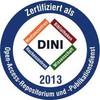Preview |
PDF, English
Download (5MB) | Terms of use |
Abstract
Understanding the dynamic principles that enable the brain to flexibly adapt behavior in changing environments remains a central challenge in neuroscience. In this thesis, I address this question through the lens of dynamical systems reconstruction. I use a reconstruction method, specifically targeted for non-autonomous neural dynamics from multiple single-unit recordings in the rodent medial prefrontal cortex (mPFC) during a probabilistic rule-learning task. To this end, I employ a parameter-evolving piecewise-linear recurrent neural network (pePLRNN), which explicitly incorporates time-dependent changes in the underlying dynamical system (DS). This approach enables the reconstruction of non-autonomous DSs from nonstationary data to characterize of how the neural dynamics evolve across learning. The approach was first validated on benchmark systems and task-trained RNNs, where it successfully reconstructed the underlying DS. When trained on the hidden state trajectories of RNNs solving artificial rule-learning tasks, the pePLRNN uncovered the dynamic mechanisms by which these networks implemented the learning process. Applied to electrophysiological recordings from the mPFC of rats, the model successfully reconstructed the non-stationary neural dynamics underlying rule learning. The trained model-generated neural trajectories that exhibited the same decoding properties as the original data. Change points (CP) detected in model-generated trajectories aligned with those observed in the recorded activity. Simulations of neural trajectories under experimental conditions reproduced the behavioral distributions of animals for both rule types. Analyzing the trained pePLRNN as a functional surrogate model revealed that both rules were implemented via a single stimulus-dependent attracting region that guided neural transients toward the correct decision. During learning, this attracting region, along with the trial-specific parameters and latent neural trajectories, exhibited abrupt changes that preceded the behavioral change point. This work establishes a principled framework for reconstructing non-autonomous DS directly from empirical data and demonstrates how their analysis as surrogate models can reveal dynamic principles underlying the neural computations supporting cognitive flexibility.
| Document type: | Dissertation |
|---|---|
| Supervisor: | Durstewitz, Prof. Dr. Daniel |
| Place of Publication: | Heidelberg |
| Date of thesis defense: | 18 July 2025 |
| Date Deposited: | 14 Oct 2025 11:54 |
| Date: | 2025 |
| Faculties / Institutes: | The Faculty of Bio Sciences > Dean's Office of the Faculty of Bio Sciences |
| DDC-classification: | 000 Generalities, Science 530 Physics 570 Life sciences |
| Controlled Keywords: | Dynamical Systems Reconstruction, RNN, rule Learning, decision making |









